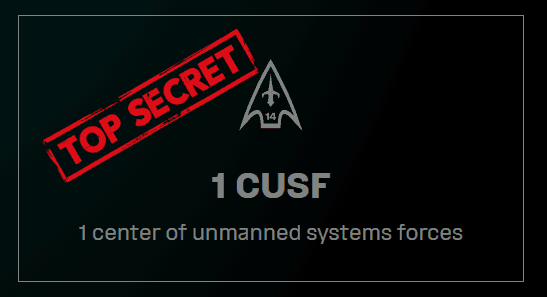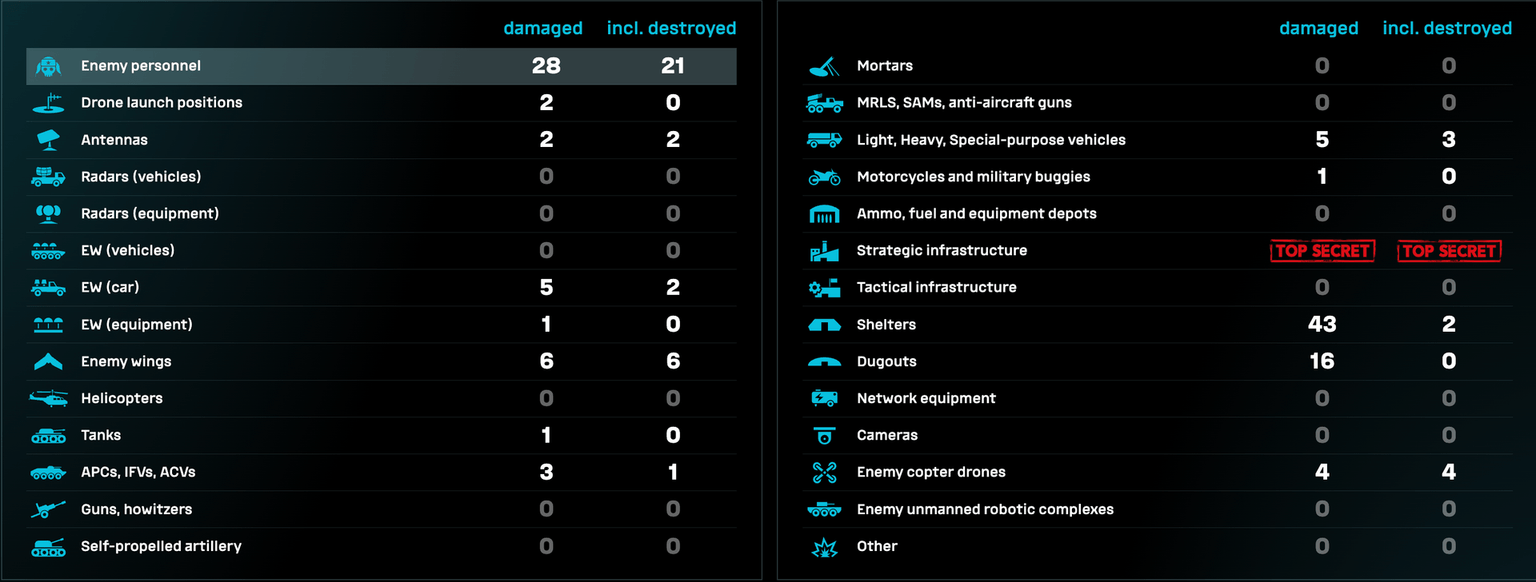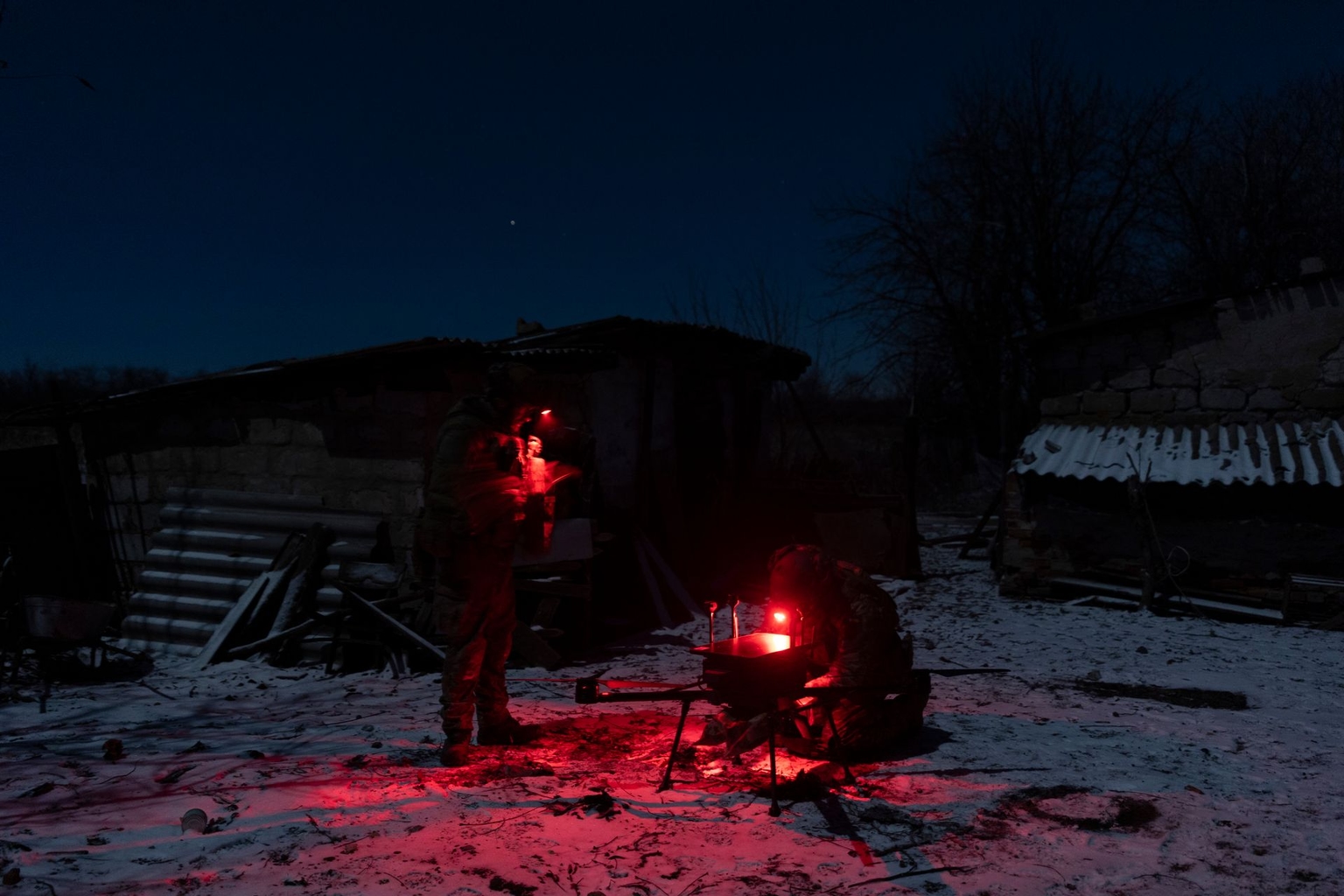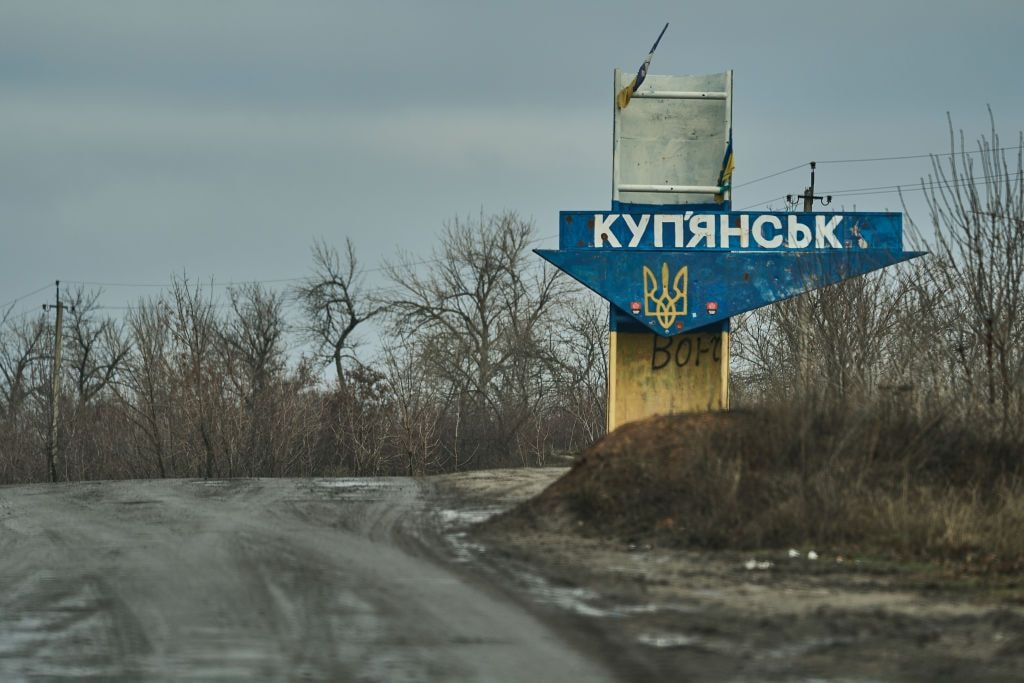'Online Killboard' — How to track Ukraine’s top drone units in (almost) real-time

Since July 2025, Ukraine’s Unmanned Systems Forces have been running one of the most transparent projects of the war — an online "killboard" that lets anyone track confirmed Russian losses from Ukrainian drone strikes in near real time.
On a colorful dashboard titled "USF Grouping Online Killboard," visitors can browse through twelve of the drone force’s thirteen units to see their latest confirmed results. Each entry lists destroyed targets, personnel losses, and other verified data.
A total of twenty-eight different targets are listed, including tanks, helicopters, radars, shelters, and strategic infrastructure — though this last entry is listed as "top secret" with no data displayed.
The data refreshes approximately every five minutes, and each day comes with a new report.
The website is regularly advertised by Major Robert "Madyar" Brovdi, commander of the Unmanned Systems Forces, who often includes a link with his regular — and colorful — battlefield updates.
"The first thousand worms of November have already been buried in four days," he wrote on Telegram on Nov. 4, using his signature slang for Russian soldiers.
"The fog is annoying — the enemy takes advantage of it and pushes forward. And dies in industrial quantities. Our pilots eliminated 260 ‘worms’ in a single day."

"The system automatically tracks the use of drones, munitions, and components, and performs algorithmic analysis of the effectiveness of crews," Olha Meloshyna, spokesperson for the Unmanned Systems Forces, told the Kyiv Independent.
"The results of deep-strike operations are released only after official confirmation from the General Staff," she added.
Gamification of war
While the site was primarily created to demonstrate the transparency of Ukraine’s drone units, it also carries a subtle element of gamification. Each unit can see how others perform, turning operational data into a form of competition.
"The system is meant to increase openness in combat operations, but also serve as a motivational and communication instrument that shows our units’ professionalism," Meloshyna said.
Ukraine has been experimenting with this kind of competition for over a year.
The government first introduced a points-based program for drone teams in August 2024, allowing units to earn and exchange points for military supplies.
Through an open marketplace called Brave1 Market, soldiers can use their points to buy surveillance drones, spare parts, or ammunition.
"The point system is something we constantly discuss," said Serhiy, a soldier serving in one of the unmanned systems units, who asked to be identified only by his first name.
"On the one hand, the points are an important indicator of a unit’s effectiveness. On the other, internal competition can sometimes push people to chase better scores rather than make tactically sound decisions," he told the Kyiv Independent.

He added that the scoring rules haven’t always been balanced and have even impacted Ukraine's targeting on the battlefield — at one point, infantry targets earned relatively few points, so some drone operators hesitated to strike them, waiting instead for heavier equipment to appear.
Despite its imperfections, the competition system is rapidly gaining popularity among soldiers. Around 400 drone units are now taking part in the program, up from 95 in August, Ukrainian officials told the Guardian in November.
Serhiy said that recent months have brought gradual improvements to how rewards are calculated, but "there’s still work to do to make the system fully fair."
Recruitment tool
For all its spreadsheets, stats, and verified strikes, the "killboard" is also a PR tool.
Before visitors even scroll through the list of destroyed targets, the site greets them with a banner: "15,000 new vacancies in the Unmanned Forces."
"The platform is also a channel of communication," Meloshyna added.
On Oct. 31, the branch launched a major recruitment campaign to expand its ranks by 15,000 with only half of them combat roles, aiming to make up 5% of Ukraine’s Defense Forces.









